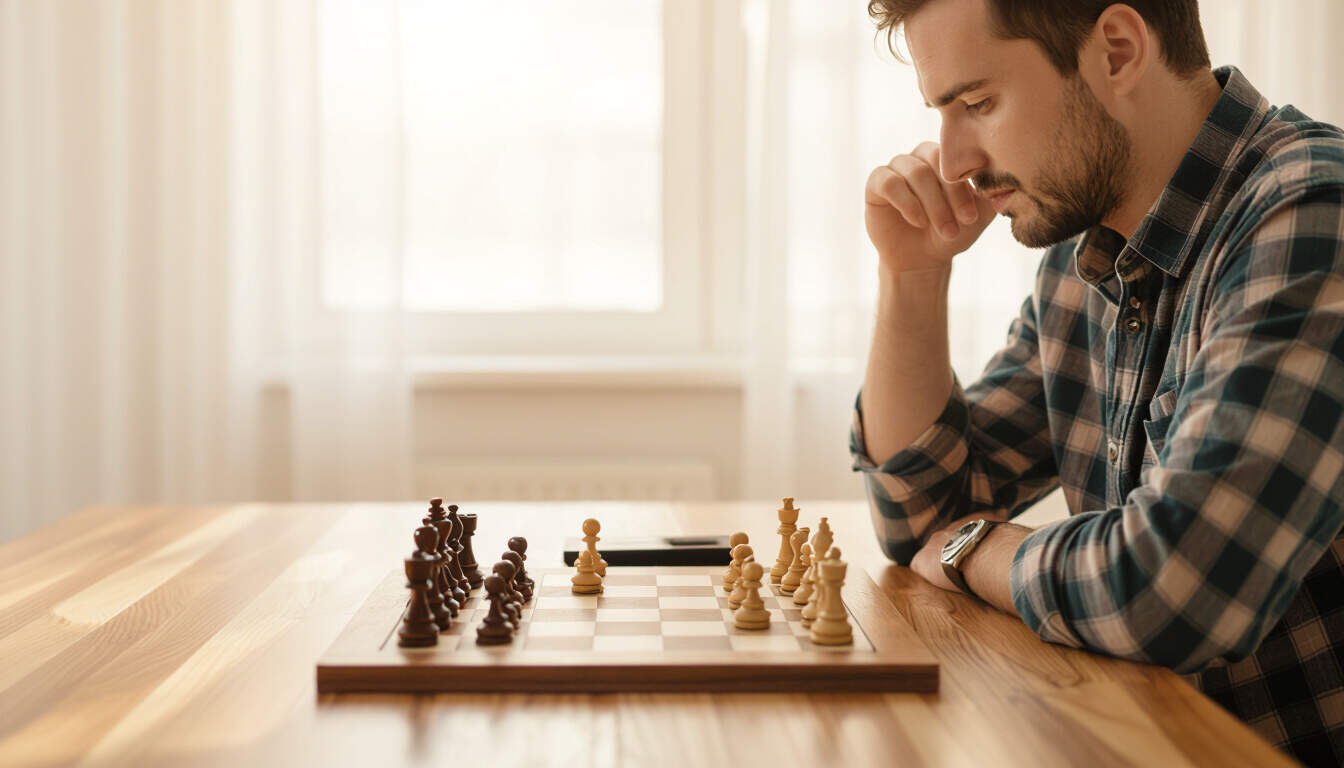Second-Order Thinking in Chess Strategy
 by Verner Mayer
by Verner Mayer
Chess strategy often involves looking beyond immediate moves to anticipate wider outcomes and cycles of influence. This approach draws on second-order thinking and feedback loops, offering valuable lessons for cognitive processes and personal growth in everyday decision-making.

Chess has long been a field where deep strategic analysis plays a key role. Players must consider not just their next move, but the ripple effects that follow. In this context, second-order thinking becomes essential. It involves examining the potential consequences of actions and how those might lead to further results.
For instance, a simple pawn advance might open lines for attack, but it could also create vulnerabilities that opponents exploit later. This level of foresight helps players avoid short-term gains that undermine long-term success.
Feedback loops add another layer to chess strategy. These are patterns where the outcomes of moves influence subsequent decisions, creating cycles that either reinforce or diminish a player's position. A strong opening might build momentum, leading to more aggressive plays, while a defensive error could trigger a downward spiral of lost pieces.
The Basics of Second-Order Thinking
In chess, first-order thinking focuses on immediate outcomes, such as capturing a piece or controlling the center. However, relying solely on this approach often leads to pitfalls. Feedback loops illustrate why deeper analysis matters. For example, if a player castles early to protect the king, this move might invite counterplay from the opponent, starting a cycle where defensive and offensive strategies intersect.
Consider a game where sacrificing a bishop opens up the opponent's king. At first glance, the loss seems detrimental, but if it leads to a checkmate, the initial sacrifice becomes part of a positive feedback loop. Players who recognize these patterns can adjust their tactics mid-game, turning potential weaknesses into strengths.
Applying Feedback Loops in Practice
Feedback loops in chess can be positive or negative. A positive loop might occur when a player gains a material advantage, allowing for more confident attacks that build on each other. Conversely, a negative loop could arise from repeated mistakes, like overextending pawns, which exposes the king and invites counterattacks.
To break a negative loop, players often need to reassess their position. This might involve trading pieces to simplify the board or focusing on consolidation. In one famous game, a grandmaster used this technique by retreating pieces to regroup, effectively halting a downward cycle and regaining control.
Lists of common feedback scenarios can aid beginners:
- Aggressive openings that lead to rapid development and increased pressure.
- Defensive setups that create stalemates, preventing further progress.
- Endgame maneuvers where small advantages compound into victory.
By mapping out these loops, players develop intuition for how actions echo through the game.
Linking to Cognitive Processes
Beyond the board, the principles of second-order thinking and feedback loops apply to broader cognitive processes. Professionals in fields like business or education can use chess as a metaphor for decision-making. For example, a manager deciding on a project might weigh not just the immediate benefits, but how those affect team dynamics over time.
Students studying systems thinking find chess particularly useful. It demonstrates how interconnected elements—such as piece coordination and timing—influence outcomes. Through regular practice, individuals build habits that enhance personal development, fostering resilience and adaptability.
One effective exercise is analyzing past games. By reviewing moves and their repercussions, players identify recurring feedback patterns. This reflective process strengthens analytical skills, much like journaling thoughts in daily life.
Real-World Examples from Chess History
Historical games provide concrete illustrations. In a match between two legends, one player's early aggression created a feedback loop of escalating attacks, ultimately leading to a win. This showed how sustained pressure can overwhelm defenses, turning the tide decisively.
In contrast, another game highlighted the dangers of ignoring second-order effects. A player focused on material gain overlooked positional weaknesses, allowing the opponent to exploit a feedback loop of counterattacks that shifted the balance.
These examples underscore the importance of balance. Players must blend intuition with calculation, ensuring that strategies account for evolving situations.
Conclusion and Practical Tips
Incorporating second-order thinking and awareness of feedback loops into chess strategy enriches the game and offers transferable skills. For curious individuals, starting with simple puzzles can build foundational knowledge. Over time, this practice enhances decision-making in various contexts, from professional challenges to personal goals.
By prioritizing these concepts, players and thinkers alike can achieve greater depth in their approaches, leading to more effective and insightful outcomes.
